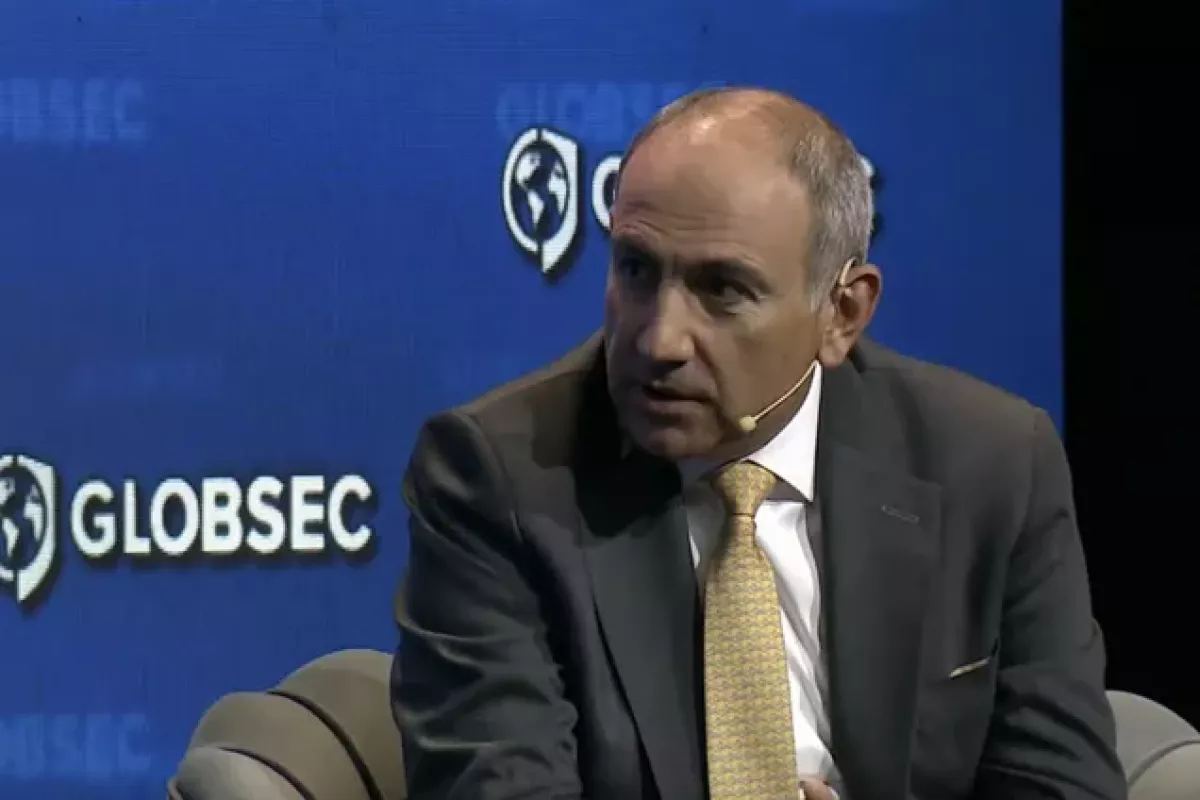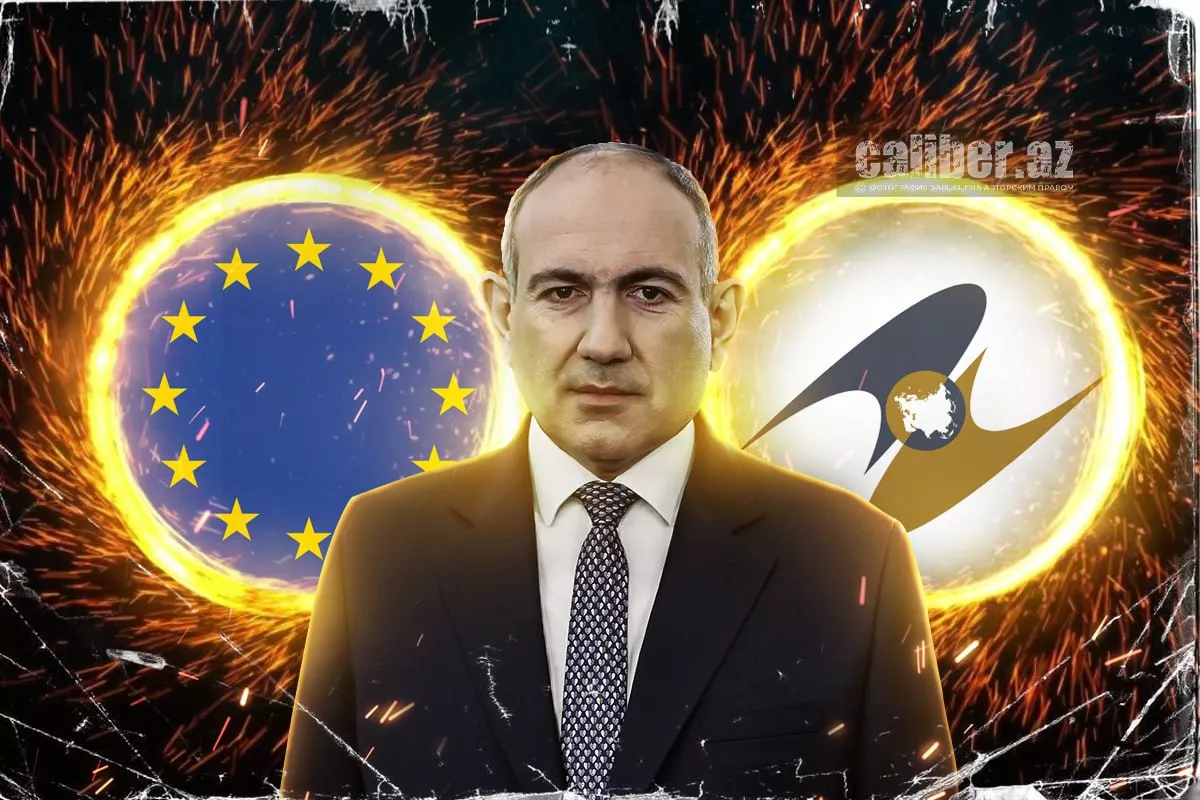Armenia at crossroads: Balancing between Moscow and Brussels Two chairs for one prime minister
At the recent GLOBSEC 2025 forum in Prague, Prime Minister of the Republic of Armenia Nikol Pashinyan stated that the country would eventually have to choose between the Eurasian Economic Union (EAEU) and the European Union (EU).
“Of course, we understand that we cannot be part of both the EAEU and the EU at the same time. It is obvious that this is a point on which we will have to make a decision in the future. But it is very important that this decision must be made by the citizens of the Republic of Armenia — of course, led by the government and the National Assembly,” he said. However, he clarified that until there is an urgent need to make such a decision, Armenia will continue its democratic reforms in order to align as closely as possible with European Union standards.

In principle, the Armenian Prime Minister’s statement about the need to make a clear choice between the EAEU and the EU should signify Armenia’s departure from its longstanding “sitting on two chairs” policy—or, more bluntly, its double game—which has long been a cornerstone of the country's state strategy. It is a well-known fact: by manoeuvring between the EAEU and the EU, Armenia has managed to extract substantial economic benefits from its participation in the Eurasian integration structure, while simultaneously receiving generous financial dividends from the European Union.
Naturally, such a lucrative model of cooperation with two divergent blocs serves the interests of the Armenian leadership. And if it weren’t for pressure from Russia, Armenia might have continued this comfortable balancing act. However, the tough messages that occasionally emanate from Moscow are now forcing Yerevan to clarify its foreign policy orientation. Given the recent signs of relative warming in Armenian-Russian relations, it seems likely that Pashinyan’s surprisingly measured rhetoric was primarily aimed at catching the Kremlin’s attention.
The fact that Russian pressure on Yerevan has not gone unnoticed is further confirmed by the Armenian Prime Minister’s remark that “Armenia does not want to end the presence of Russian troops in the country, nor sever relations with Russia, despite its close cooperation with the EU.” In theory, judging by Nikol Pashinyan’s statements, one might conclude that Armenia has already made its choice in favour of continued integration with the EAEU, while the EU is primarily seen as a source of funding for “reforms” and a tool to preserve a pro-Western image in regional politics.
The Armenian leadership is well aware that leaving the EAEU would spell serious economic difficulties for the country—challenges it would have to face without any external assistance. Armenia would also have to navigate a difficult transitional period, once it loses access to the markets of Russia and other EAEU member states. The agricultural sector, which accounts for a significant share of Armenia’s exports, would be hit the hardest. For comparison: in 2024, Armenia’s trade turnover with EAEU countries amounted to $12.7 billion, while its trade with EU countries reached only $2.3 billion.
Moscow’s interests in this matter are also clearly evident. In recent years, Armenia has become a fairly advantageous transit hub for Russia in terms of international trade. Politically speaking, if Armenia chooses the Eurasian integration model, Russia would further consolidate its position in the region, while Armenia’s own security-related concerns would, in theory, be taken off the table.

It is no secret that Armenia has traditionally been Russia’s closest ally in the South Caucasus—its strategic outpost in the region. It is therefore not surprising that Moscow has repeatedly reminded Yerevan that the republic could lose its security guarantees should it fully pivot to the West. For instance, in a recent interview with an Armenian media outlet, Russian Ambassador to Armenia Sergey Kopyrkin made a telling statement: “The example of Ukraine shows what happens when a country finds itself on the fault line between Russia and the West.” The Russian diplomat also warned Armenia of the potential challenges it may face if it moves even closer to the West.
In the same vein, Russian Deputy Prime Minister Alexey Overchuk told journalists that Armenia would not be able to “sit on two chairs” for much longer and would soon be forced to choose between the EAEU and the EU. Similarly, Russian Foreign Ministry Special Envoy Rodion Miroshnik made a pointed comment while speaking to reporters in Yerevan: “Ukraine has long enshrined its aspiration to join the EU and NATO in its Constitution. But how far has Ukraine actually progressed in that direction? I think policymakers should draw conclusions from such parallels—conclusions that serve the best interests of the Armenian people.”
The recent visit of Russian Foreign Minister Sergey Lavrov to Yerevan left no doubt that Moscow is determined to assert its influence over Armenia and sees the country’s future squarely within the orbit of Russian policy.
It is also worth recalling that it was Moscow that compelled Yerevan to postpone discussions on a draft bill aimed at launching the process of Armenia’s accession to the EU. After the Armenian parliament voted on 12 February in favour of the draft law supporting European integration, Russia responded with a sharp reaction, making it clear that when it comes to Armenia’s security, there is no alternative to the Collective Security Treaty Organisation (CSTO) membership. In response, Prime Minister Pashinyan stated that the decision did not amount to Armenia’s automatic accession to the EU, as such a step would ultimately require a national referendum.
Later, Pashinyan added that Armenia is “feeling quite comfortable” within the EAEU, is interested in deepening relations with Iran, but also acknowledged that “a certain and sensitive segment of the population” wants a European future for the country. In other words, the Prime Minister deflected the responsibility for this strategic choice onto Armenian society.
Pashinyan regularly plays this card—both when making key political decisions and when promoting his concept of the “real Armenia.” It is reasonable to assume that his reference to the Armenian people at the recent GLOBSEC 2025 forum in Prague was no accident. This political manoeuvre is designed to delay for as long as possible the moment of reckoning over the country’s future direction—namely, whether to align with the EAEU or the EU.
Given Yerevan’s inconsistent foreign policy and Pashinyan’s rhetorical acrobatics, it is entirely possible that the issue could remain indefinitely suspended in Armenia’s diplomatic agenda.








